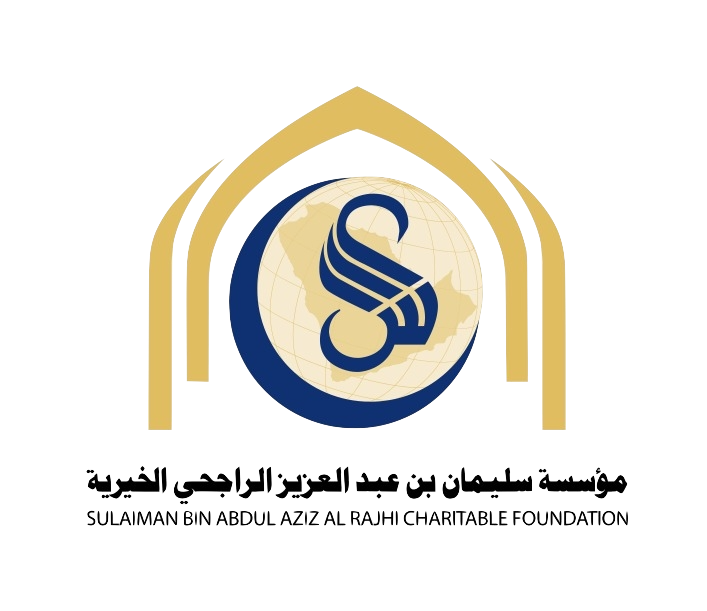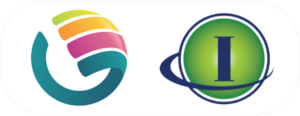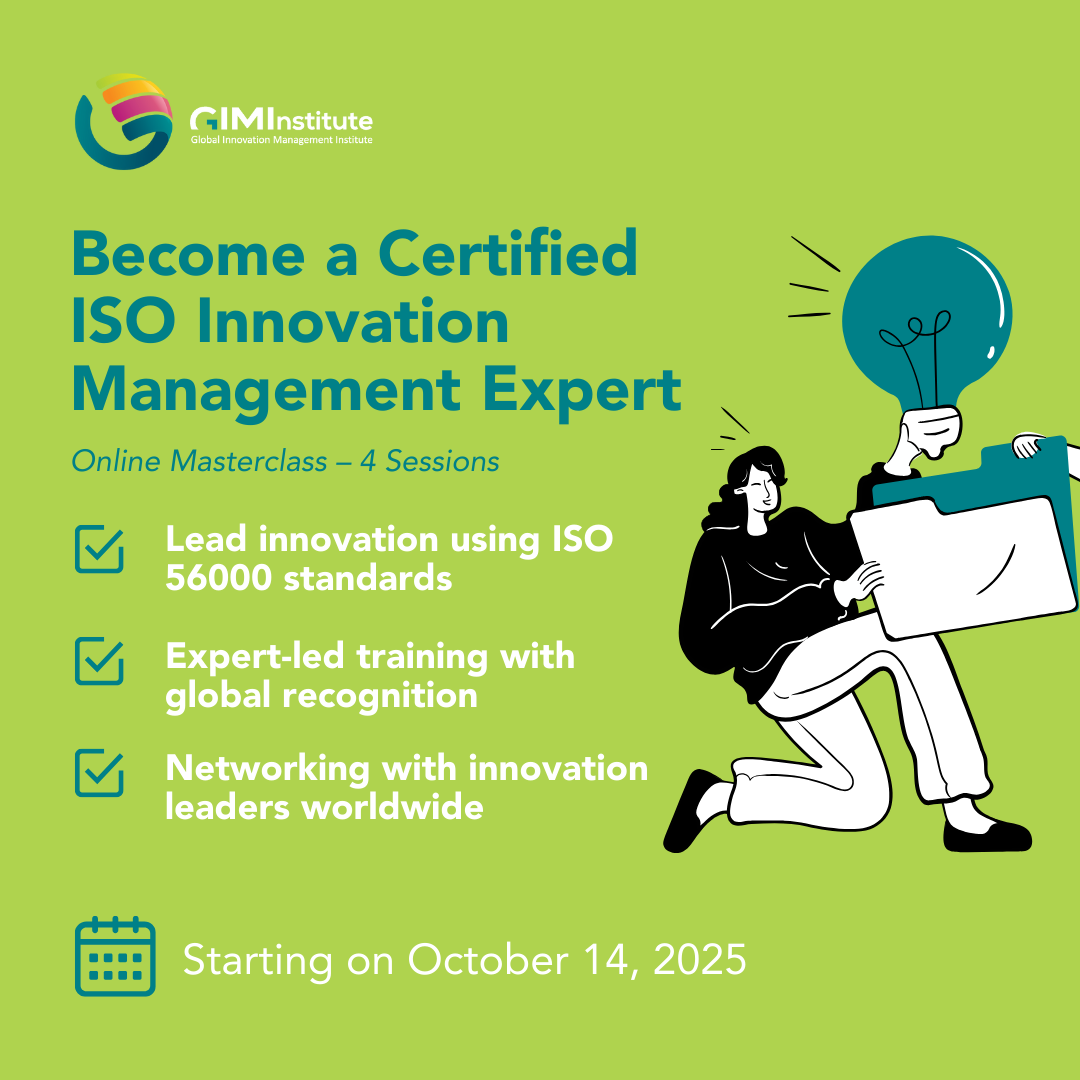
Future Foresight Organizational Certification
Our Future Foresight Organizational Certification includes a maturity assessment that provides a comprehensive view around the 4 key categories of the S4Futures Framework, assessing the maturity of the organization's future foresight capabilities.
A GIMI‑IAOIP Future Foresight Certified Organization is a corporation, SME, NGO, non-profit, or governmental entity officially recognized as having structured capabilities to sustain growth through Foresight and Scenarios.
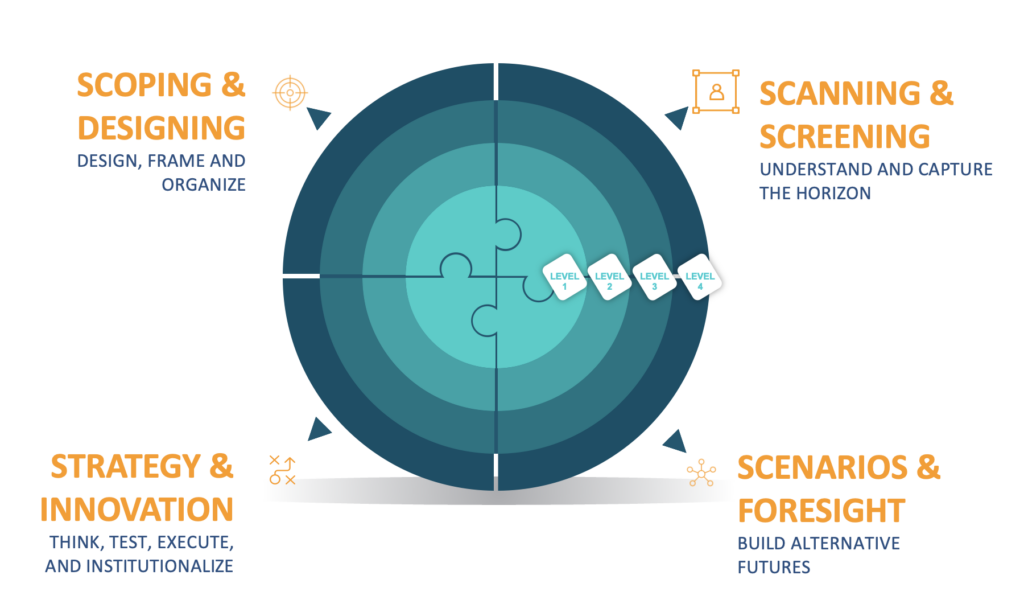
Future Foresight Organizational Certification Levels
There are 4 levels of Organization Certification in Future Foresight, and each one measures specific outcomes to validate an organization’s Future Foresight maturity level and has clear criteria to meet.
Eligibility Requirements
To be eligible to obtain the GIMI‑IAOIP Certificate in Future Foresight at any level, the applicant must undergo a systematic audit, which includes an assessment of the strategy, existing capabilities, discipline and current approach to Future Foresight.
Who Should Apply?
Organizations or business units who have already taken at least the initial steps in creating:
- A Future Foresight system
- Trained teams in Future Foresight and Scenarios
Foresight Maturity Level
Through the audit process, GIMI‑IAOIP auditors assess the organization’s Future Foresight maturity level at four core categories: Scoping; Scanning; Scenarios; and Strategy.

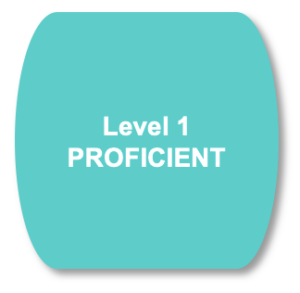 At Level 1, the organization demonstrates an intent to incorporate Future Foresight into its projects and initiatives. Level 1 represents an introductory phase where the organization begins to implement Future Foresight methodologies, focusing on building a foundational understanding and initial capabilities within the team.
At Level 1, the organization demonstrates an intent to incorporate Future Foresight into its projects and initiatives. Level 1 represents an introductory phase where the organization begins to implement Future Foresight methodologies, focusing on building a foundational understanding and initial capabilities within the team.
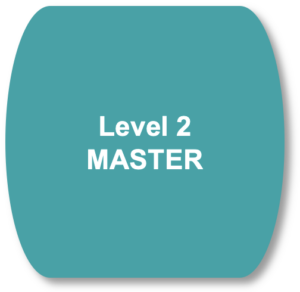
Level 2 signifies a deeper integration of Future Foresight into the organization’s projects and initiatives. At this intermediate level, the organization exhibits strategic adaptability to varying levels of uncertainty, leveraging foresight strategies to scan, analyse, and interpret data for long-term strategic implications.
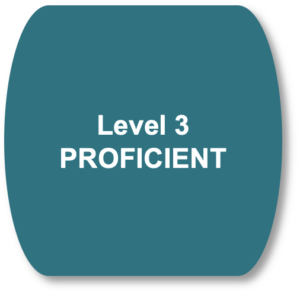 Level 3 represents an advanced stage where the organization demonstrates strategic adaptability to different levels of uncertainty and impacts.Level 3 emphasizes the application of Future Foresight methodologies to manage projects and guide decision-making processes at the managerial level.
Level 3 represents an advanced stage where the organization demonstrates strategic adaptability to different levels of uncertainty and impacts.Level 3 emphasizes the application of Future Foresight methodologies to manage projects and guide decision-making processes at the managerial level.
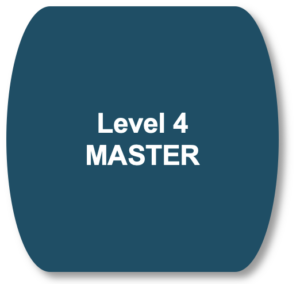 Level 4 reflects the highest level of maturity, with a dedicated foresight department operating full-time within the organization. Level 4 signifies organization wide integration of Future Foresight practices, with senior leaders actively using Future Foresight to shape the organization’s future direction, priorities, and strategies.
Level 4 reflects the highest level of maturity, with a dedicated foresight department operating full-time within the organization. Level 4 signifies organization wide integration of Future Foresight practices, with senior leaders actively using Future Foresight to shape the organization’s future direction, priorities, and strategies.
Process
In order for an organization to obtain the Future Foresight Organizational Certification, it has to go through a process of assessment (audit), accomplished either via self-audit or 3rd-party auditors (GIMI-certified auditors).
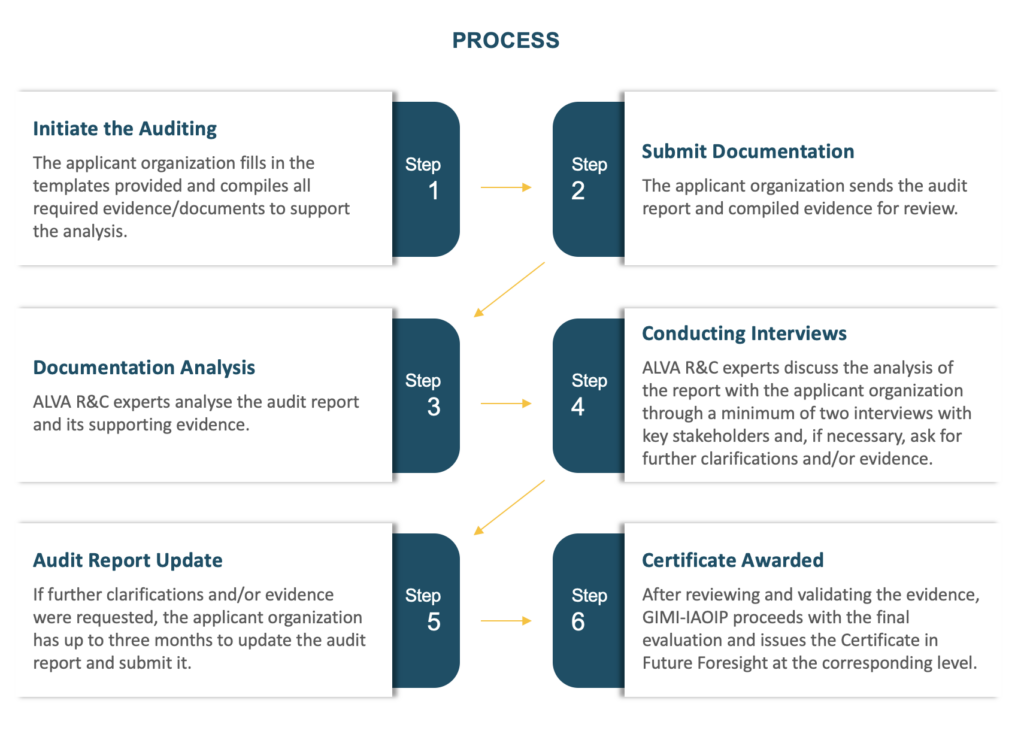
Certify Your Organization Today
Our Organizational Foresight Certification Program is designed for organizations
interested in becoming certified in Future Foresight.
The Four Core Categories of the GIMI Future Foresight Organization Certification
The certification process is strongly anchored in understanding challenges as major growth stepping stones for the future and it focuses on evidence-based future foresight, with uncertainties at its core, preventing variables that influence the medium and long term futures to be kept on a leash by traditional ways of thinking.
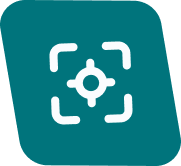
1. Scoping & Designing
- Design and Frame the Picture
- Aim and intention of the project. Available resources.
- Framing and Scoping the project. Setting the topic to be explored and how far we want to explore into the future.
- Clarification of the strategic Focal Issue and the Time Horizon (+ supporting questions).
- Audience and Foresight team. Work environment.
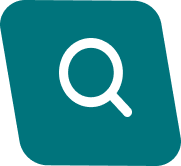
2. Scanning & Screening
- Understand and Capture the Horizon
- Deepening the understanding of the context of the topic in the defined time horizon. Scanning the organizational environment: trends and megatrends; weak signals and emergent issues; wild cards, black swans and black elephants
- Identification of key themes, collection of ideas and insights and organization of information from a wide range of sources, including data on potential sources of future change.
- Distinction, categorization, and selection of different types of drivers of change, with a special focus on key uncertainties and predetermined elements.
- Literature review and data collection, both primary and secondary. Qualitative research and/or quantitative research.
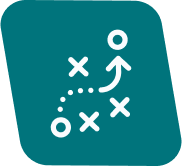
3. Scenarios & Foresight
- Build Alternative Futures.
- Generation and description of the scenarios.
- Simulation of possible, plausible and relevant futures through the development and exploration of strategic scenarios, using the Intuitive-Logics School and other scenario-building approaches like the Morphological Method, the Extreme-World Method, the Inductive Approach or the Incremental Approach.
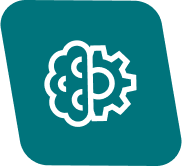
4. Strategy & Innovation
- Think and Execute.
- Link scenarios with action. Analyse implications and options.
- Explicit articulation of Foresight and Scenarios with Strategy and Innovation concepts and tools.
- Application of Strategy and/or Innovation methodologies, linking them with the scenarios.
- Build a monitoring system, including precursor/early indicators that can anticipate the development of specific scenarios.
GIMI‑IAOIP Future Foresight Certified Organizations:



